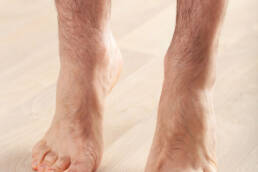A whiplash injury occurs when the neck suddenly experiences hyperextension followed by hyperflexion. This causes damage in the tendons, ligaments and muscles of the neck, resulting in pain and a restricted range of motion. A whiplash injury involves some combination of connective tissue, muscle joints and the nervous system, making it difficult to diagnose and challenging to treat.
Whiplash Phases
In the case of a rear-end car crash, whiplash can occur in about a half second. The sudden speed and stop of the accident quickly causes injury to muscles, ligaments, discs, vertabrae and nerves, which takes place in four phases.
- In the first phase, the car is hit and slides out from under the person, pressing the middle of the back against the seat. This upward motion causes compression of joints and discs while pushing the torso forward and forcing the head to snap back.
- The second phase involves the abnormal curving of the spine that occurs while the head is still moving backwards. This awkward position causes shearing in the neck, which inflicts the most whiplash damage involved in regard to bone, nerves and joints.
- The third phase begins when the car slows down, causing the neck and head to quickly accelerate forward. If the person steps on the brake pedal, the car will slow down even more quickly, forcing the seatbelt to lock up and tighten around the torso.
- In the fourth and final phase, the harness and seatbelt tightening cause the head to jerk violently forward. This results in the most severe whiplash injuries involving ligaments, muscles and spinal discs, which are forced from their natural position. Mild or severe brain injury may also occur depending on the speed of the crash and if the person was properly restrained.
After an accident, whiplash can present with neck pain, headaches, dizziness and brain injury. While the majority of whiplash injuries heal within nine months, some may continue to cause weakness, pain and restricted movement for many years afterward. Whiplash responds best to a combination of soft-tissue rehabilitation and chiropractic adjustment along with proper self-care at home.

Make an appointment today and alleviate your pain. Contact us today and let us help you improve your health.
By offering different chiropractic services, our team can create personalized treatment plans for our patients to relieve aches and pains for a range of conditions.
Like this article? Spread the word!
Related Posts
March 23, 2023
Shoulder Pain
If you are experiencing shoulder pain in any capacity, contact Scott Chiropractic on Lake…
March 23, 2023
Tennis Elbow
Tennis elbow is most common in adults between the ages of 30 and 50, but can affect…




